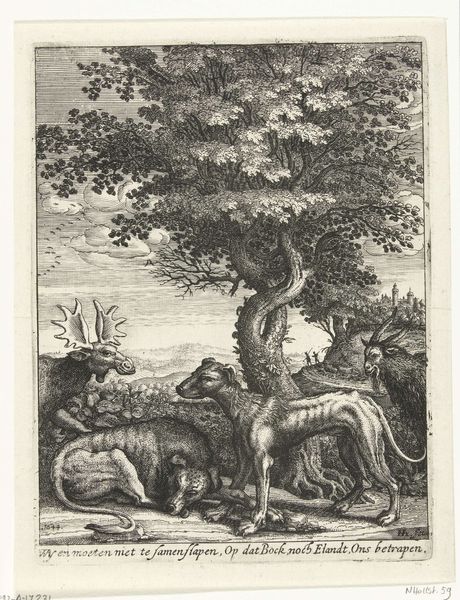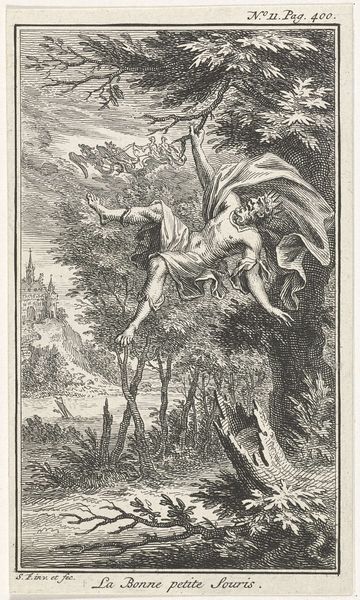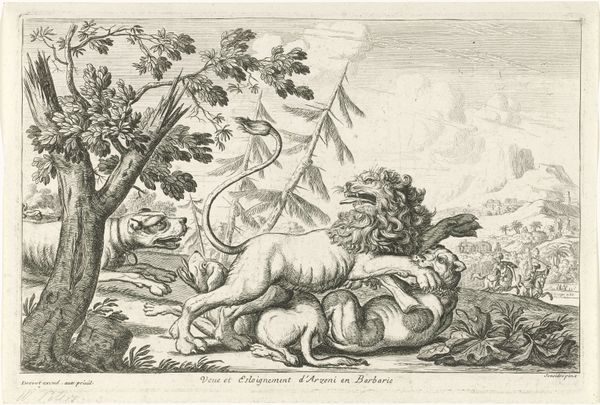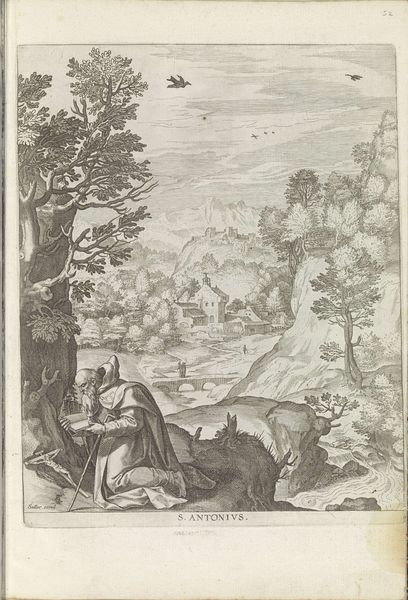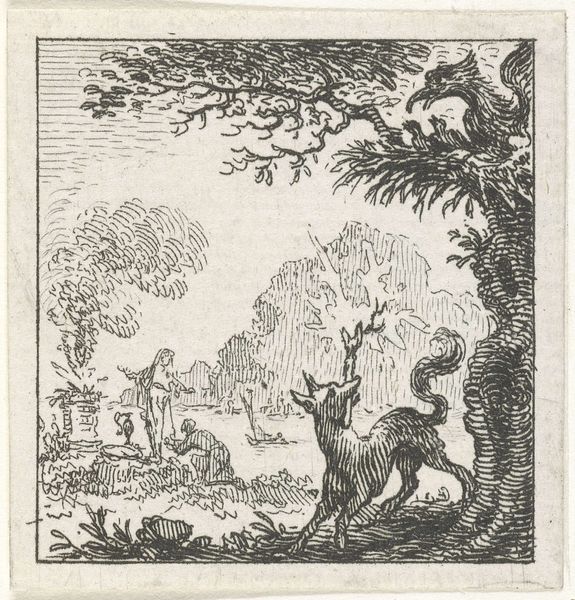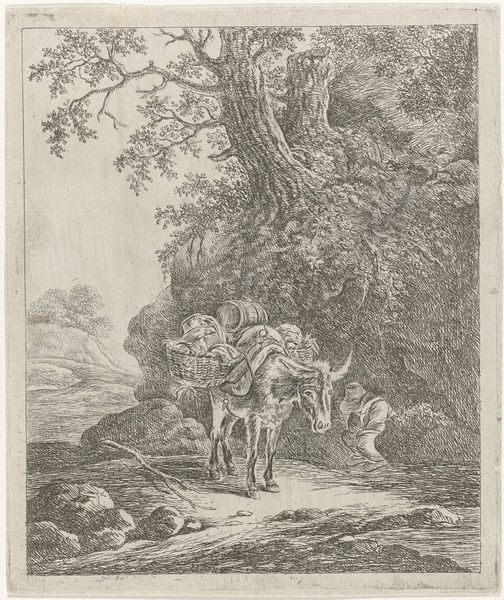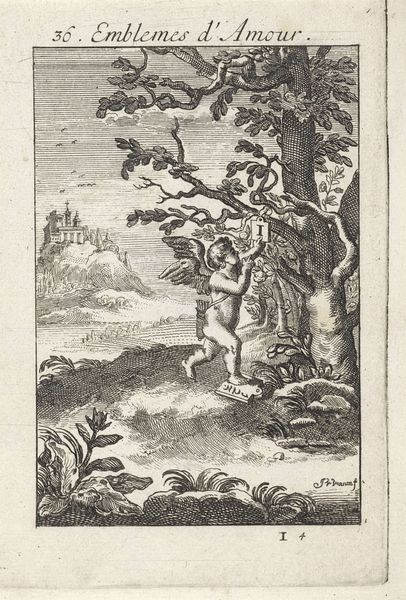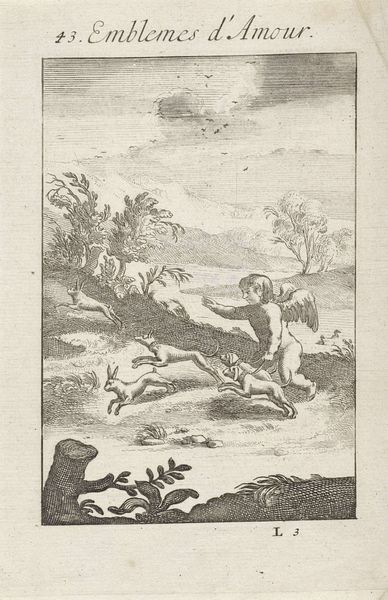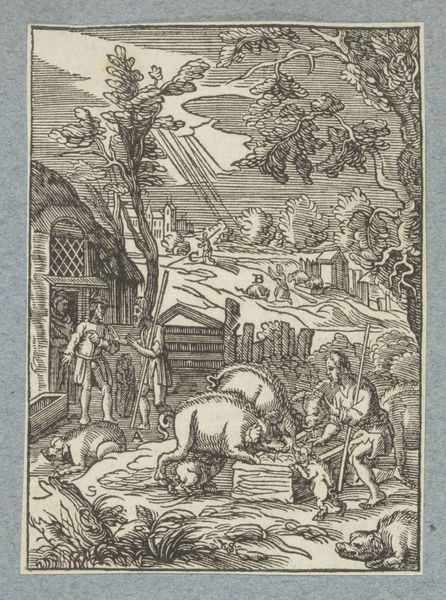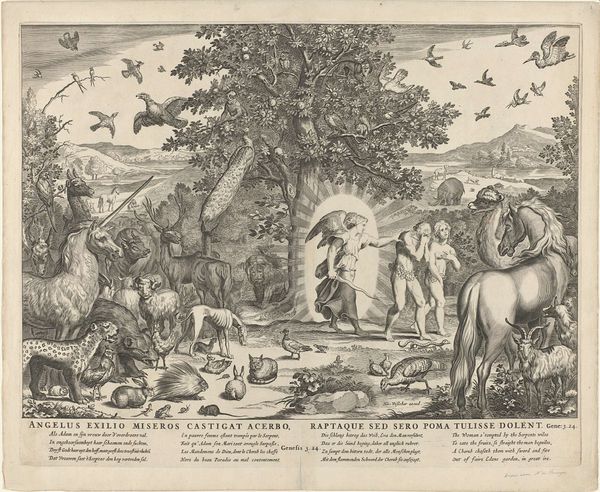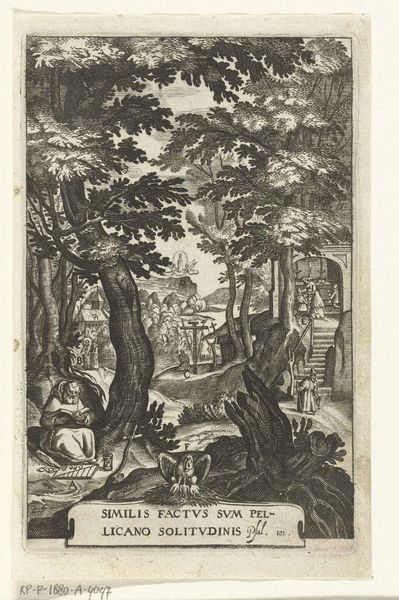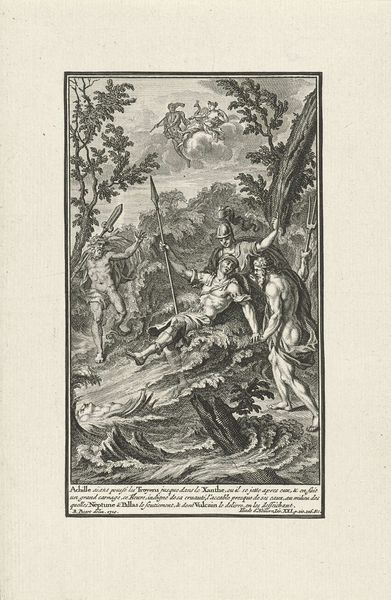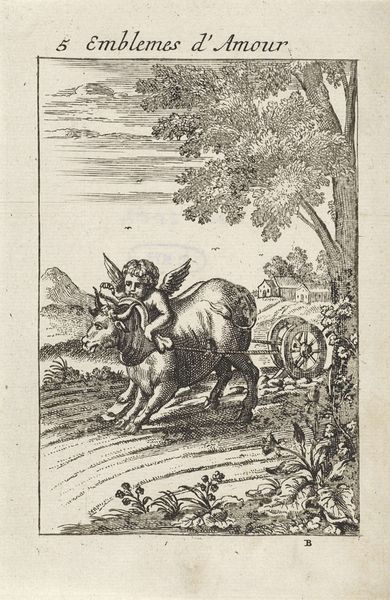
drawing, ink, engraving
#
drawing
#
neoclacissism
#
allegory
#
pen drawing
#
landscape
#
figuration
#
ink line art
#
ink
#
history-painting
#
engraving
Dimensions: height 249 mm, width 190 mm
Copyright: Rijks Museum: Open Domain
Curator: This is "Adam and Eve in Paradise" by Reinier Vinkeles, created sometime between 1751 and 1808. The work, currently held at the Rijksmuseum, employs pen and ink in the style of an engraving to depict a landscape scene of the biblical garden. Editor: My initial reaction is to the overwhelming density of detail, creating a scene of intense idyllic peace. The intricate cross-hatching gives it a wonderfully tactile quality, despite being a line drawing. Curator: Precisely. Observe the composition – how Vinkeles organizes this scene to portray allegory, history, and figuration. The balance between light and shadow, achieved purely through line work, creates a sense of depth, pushing the viewer into a perspectival illusion within this so-called perfect creation. Editor: It strikes me that such an ordered scene still needs producing. Consider the labor involved in a piece so committed to control. What socio-economic realities allow for such devotion? Is this order aesthetic only, or a means of solidifying power structures by showcasing divine mandates made visible through production? Curator: The symmetry and idealism are striking; classically Neoclassical! This focus on structure points to Enlightenment ideals of order and reason that frame the very subject of this piece, suggesting a world that is knowable and structured according to these rational laws. The figures, with their anatomical correctness and idealized forms, become symbolic nodes within this ordered universe. Editor: But is that order inherently exclusionary? Take a closer look at how it blends manual skill and knowledge – each strike is measured, repeated, part of a carefully mastered production technique that speaks less of revelation than slow labor practices which rely on both repetition and specialized knowledge to produce symbolic form for sale and recognition. The commodification of innocence. Curator: I see the tension that you point toward. Ultimately, however, this work displays the human impulse to give form to meaning. It distills narrative down to its essence using pictorial composition. Editor: And exposes a system of belief translated into a meticulously made and inevitably valued product.
Comments
No comments
Be the first to comment and join the conversation on the ultimate creative platform.
